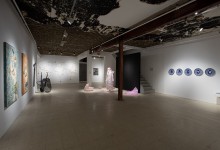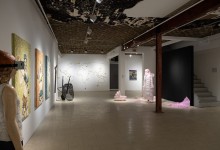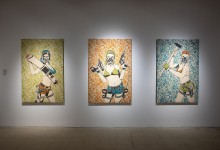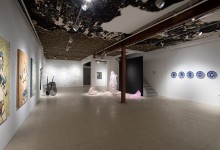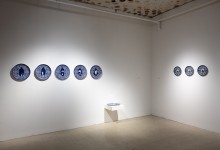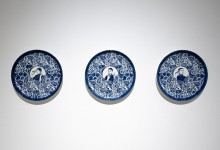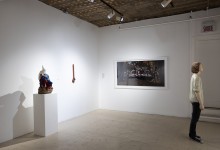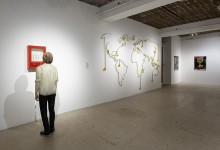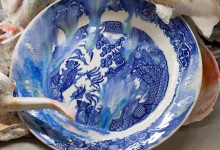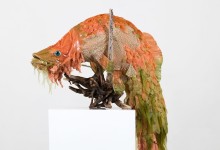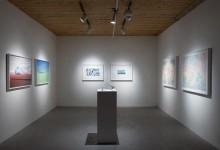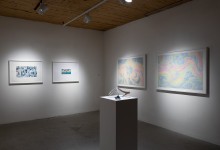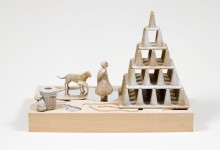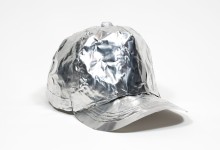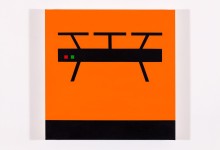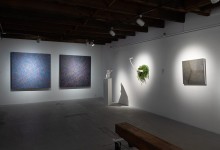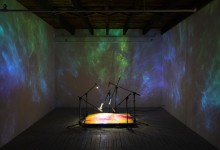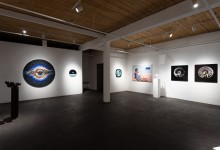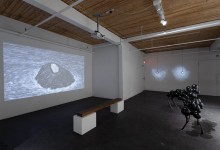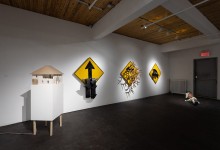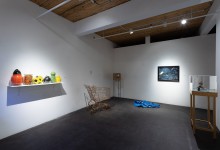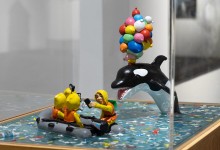Terra Nova | Looking at the present and the future
25th Anniversary Exhibition
Sonny Assu, Ingrid Bachmann, Patrick Beaulieu, Judith Berry, Patrick Bérubé, Simon Bilodeau, Renato Garza Cervera, Magalie Comeau, Robbie Cornelissen, Shayne Dark, Jannick Deslauriers, Jean-Robert Drouillard, Erika Dueck, Eddy Firmin, Nicholas Galanin, Karine Giboulo, Hédy Gobaa, Dina Goldstein, Adam Gunn, Jessica Houston, Trevor Kiernander, Emily Jan, Holly King, Guillaume Lachapelle, Laurent Lamarche, Éric Lamontagne, Cal Lane, Pierre Laroche, Zeke Moores, Nadia Myre, Michael Patten, Karine Payette, Bevan Ramsay, Jennifer Small, Oli Sorenson, Nicholas Crombach & Nurielle Stern, Diana Thorneycroft, José Luis Torres, Brandon Vickerd, Dana Widawski, Colleen Wolstenholme, Jinny Yu
Text by Rhéal Olivier Lanthier & Noémie Chevalier
Humans have always been in search of new frontiers, new territories. But the time has come to be content with the planet we occupy, the time has come to build a better world. Where are we and where are we going? These questions are the indispensable premises for us to begin the necessary changes. The selection of works at the heart of this exhibition allows us to take a look at the different aspects of our lives and our future.
The exhibition is part of the notion of territory, its physical and metaphysical evolution, and the social circumstances and societal responsibilities we know about on our planet. Terra Nova: looking at the present and the future aims to guarantee an environment of dialogue and reflection on all of our futures. How can we reflect the issues and dilemmas confronting today’s territories while grasping something of our possible futures? In order to link the social question to the territory, each artist proposes a discovery of his own vision of the world.
(News)
We are experiencing a global health crisis, and Karine Giboulo’s recent dioramas illustrate the new reality that we have all been experiencing for several months. A situation from which we can no longer escape, be it by wearing face coverings or the long queues at the entrance of shops or online shopping on Amazon. The Covid crisis also gives a new breath to virtual reality. These new practices are emerging and accelerating. For lack of being able to meet physically, it is with a virtual reality helmet that Jean-Robert Drouillard and Karine Giboulo imagine their characters in a post-confinement future. Finally, deprived of all contact, the human being evolves in a protected zone under surveillance. Each life is controlled either under the eye of Sonny Assu’s cameras or through Oli Sorenson’s digital and industrial infrastructures.
(Environment)
This health crisis would almost make us forget the environmental crisis for which there is no vaccine. As a result, artists are deploying projects where ecology is at the heart of their approach. This is notably the case for several artists, including Patrick Beaulieu’s video installation Maumusson. In a poetic way, it addresses the moving forces and troubled zones that characterize the relationship between sea and land and between humans and their environment. This phenomenon of erosion shows to what extent climate disruption aggravates the coastline. As for Patrick Bérubé and Jessica Houston, they photographed a panorama where the horizon line commands our gaze in the distance. These images present the measure of environmental injustice, while opening up a space to rethink nature.
Wonder and the appearance of creatures can be seen in the works of the duo Nicholas Crombach & Nurielle Stern, Emily Jan and Brandon Vickerd. In fact, through their handmade work they re-imagine animals mixing the familiar and the distant, the real and the myth, thus becoming true creatures in their own right.
(Social relationships)
One of the other challenges is unquestionably to combat social inequality and racism in our societies. Nicholas Galanin’s work My Ears Are Numb refers to the 2010 murder of John T. Williams in the United States. He was shot without any reason, proving the high risk that indigenous people are victims of police stops. The artist has stretched the American flag over the circle of a drum whose stick is a police baton that he carved out of red cedar, reflecting the violence felt by Native people for centuries. Eddy Firmin’s art also questions the transcultural logics of his identity and the balance of power at play in it. On the theoretical level, he is working on a Bossale method, a proposal for decolonizing the imaginary in art. In particular, Dana Widawski and Colleen Wolstenholme use images of women to reflect on their identity through impositions and constraints. All these questions reveal all the conflicts about gender and the feminine condition.
(Territory/space)
What does the notion of territory ultimately mean? Through their detour, Éric Lamontagne and José Luis Torres change the meaning of signs, landscape and everyday objects. By shaping a new reality of our environment, the artists convert our sense of perception through a new approach to our collective consciousness. Beyond the boundaries of the Earth that we can observe through Adam Gunn’s paintings that he calls Island of the Dead, the space race has never been stronger since the last moon landing by the United States in 1969. With his sculpture Colonization of the Moon, Michael Patten demonstrates the frenetic competition of countries to claim their belonging to a territory and thus mark with a flag the new boundaries of its borders.
(Illusion/onirism)
Visual illusion is at the heart of Guillaume Lachapelle and Laurent Lamarche’s work. The artists’ devices plunge us into strange microcosms or settings carefully manipulated by optical instruments (mirror, dichroic film…) that give us the illusion of infinite immensity for Lachapelle or kinds of nano-organisms for Lamarche. On the edge of abstraction, Judith Berry’s astonishing landscapes encourage contemplation while being imbued with a disconcerting unreality. While in their paintings, Trevor Kiernander and Shayne Dark deploy on the surface a brilliant vision of colorization with the power of pure abstraction. In their art projects, artists Dina Goldstein and Jennifer Small draw inspiration from religion to recontextualize the reading of iconic scenes such as the Pietà and The Last Supper as a means of retracing ideas that are so ancient and yet blend perfectly into contemporary culture.
Terra Nova: looking at the present and the future plunges us into the challenges of today and tomorrow.



